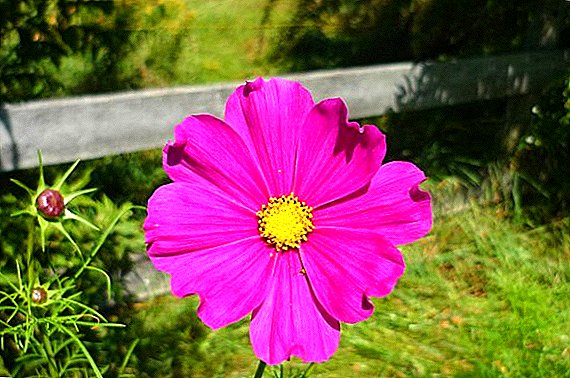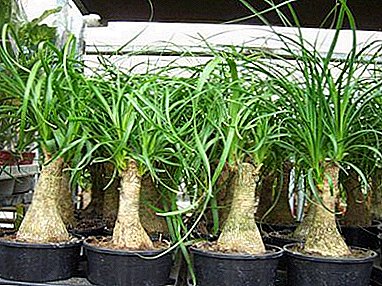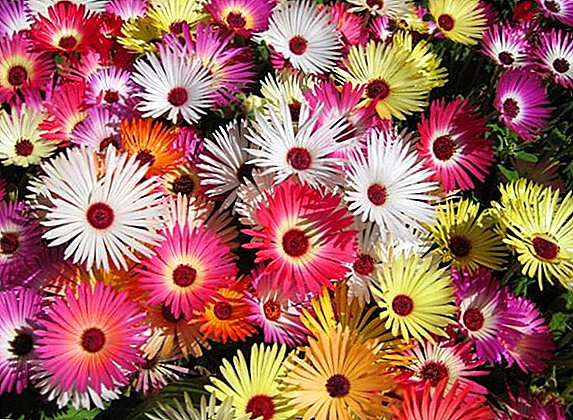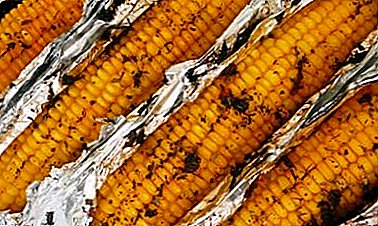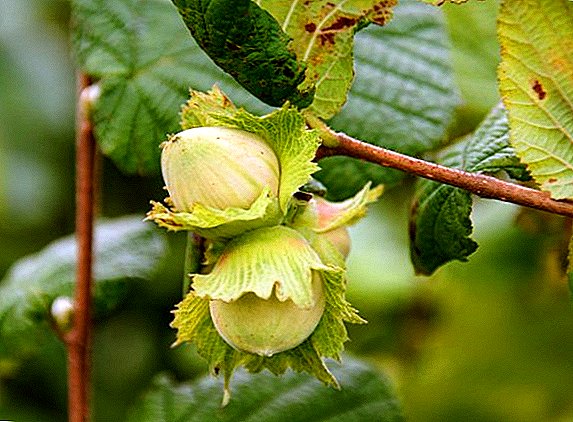 Hazelnut or Hazel For several thousand years, it has been well known to the peoples of Europe, Asia and North America, where its useful properties are appreciated. In addition to the pleasant taste and valuable nutritional qualities of hazel nuts (as well as its leaves, bark and even roots) have healing qualities. No wonder our ancestors believed that this plant gives immortality and endowed it with supernatural abilities.
Hazelnut or Hazel For several thousand years, it has been well known to the peoples of Europe, Asia and North America, where its useful properties are appreciated. In addition to the pleasant taste and valuable nutritional qualities of hazel nuts (as well as its leaves, bark and even roots) have healing qualities. No wonder our ancestors believed that this plant gives immortality and endowed it with supernatural abilities.
Did you know? The scientific name for hazel is "Córylus avellána", which is associated with the Greek word "Korus" ("helmet") and the Roman city of Avellano. The Greeks soon became acquainted with hazel or "Pontikbs Corus" (Pontic nut). Pliny reported that this nut came to the Greeks from Pontus - Asia Minor, and Hippocrates left instructions on how to properly use it to treat the liver, kidneys and stomach. From the Greeks hazel came to the Romans (the center of its breeding became the town of Avellano, each resident of which the emperor ordered to plant 50 plants). Today the term "hazelnut" is used synonymously for hazel. However, in fact, hazelnuts - cultural hybrid, derived from several varieties of hazelnuts (including common hazelnut). Also, often, the origin of the term "hazel" is associated with the similarity of the leaves of the plant with the fish bream.
The chemical composition of hazel
 Hazel nut is an energetically valuable product, as only 100 g contains 657 Kcal. In addition, hazel has a unique protein composition, identical to egg white: 17.2 g contains 18 amino acids (8 of which are essential), which the human body can receive only with food. Vegetable protein easily digestible allows you to do without meat products (which is important for vegetarians).
Hazel nut is an energetically valuable product, as only 100 g contains 657 Kcal. In addition, hazel has a unique protein composition, identical to egg white: 17.2 g contains 18 amino acids (8 of which are essential), which the human body can receive only with food. Vegetable protein easily digestible allows you to do without meat products (which is important for vegetarians).
Hazelnuts are an important source of:
- fat (up to 70%) - mono- and polyunsaturated fatty acids (52.5 and 9.1 g, respectively);
- carbohydrate (19.2%);
- dietary fiber;
- vitamins (B1, B2, B3, B4, B5, B6, B9, E, C, A, etc.);
- minerals (calcium, iron, phosphorus, magnesium, manganese, potassium, copper, zinc, selenium, iodine, etc.).
Important! Nuts should preferably be consumed raw (slightly dried). Any heat treatment will kill most of the vitamins and reduce their healing properties. The best time to take hazelnuts - morning. On the eve of its use, it is advisable to soak the peeled nuts in cold water (for 2-4 hours). This will ensure more rapid and complete absorption of nutrients by the body.
The beneficial properties of hazel for the human body
 Even a simple acquaintance with the chemical composition of hazelnut will allow you to understand the benefits of hazelnut. Only one iron in this nut contains 200% of the daily human norm. Hippocrates said that hazelnut is good for everyone (young and old) and benefits everyone.
Even a simple acquaintance with the chemical composition of hazelnut will allow you to understand the benefits of hazelnut. Only one iron in this nut contains 200% of the daily human norm. Hippocrates said that hazelnut is good for everyone (young and old) and benefits everyone.
Regular consumption of hazelnuts in food provides the body with vital proteins, vitamins, fats and minerals:
- Vitamin C, iron, magnesium and potassium are necessary for the heart, blood vessels, hemoglobin synthesis;
- fatty acid - for the prevention of atherosclerosis, stroke and other diseases;
- phytosterols and vitamin E, copper and manganese - antioxidants with anti-aging properties;
- phosphorus, magnesium and potassium - for strengthening bones, teeth, joints;
- B vitamins - protection against nerves and stress.
Benefits for women
Hazelnut nuts contain many beneficial trace elements and vitamins that are of great benefit to the female body.
For example:
- a large amount of folic acid in nuts is useful for women who are expecting a baby, since eating hazel during pregnancy will ensure the normal development of the fetus;
- nuts give a big boost of energy. Despite the high calorie content, the combination of acids is so optimal that regular consumption of nuts will not lead to excess centimeters at the waist, on the contrary, “bad” cholesterol will be excreted from the body;
- help with nervous disorders;
- preserve the natural beauty of women and rejuvenate the skin;
- stimulate lactation.
Benefits for men
 Nuts help men to cope with heavy physical exertion, but that’s not all. Hazel has long been used in traditional medicine as a means to increase potency. Folic acid contributes to the process of sperm formation (30 g of hazelnuts contain 90% of the body's daily need for this acid). In addition, hazelnuts helps with prostate diseases (for inflammatory processes it is recommended to consume 50 g of hazelnuts daily).
Nuts help men to cope with heavy physical exertion, but that’s not all. Hazel has long been used in traditional medicine as a means to increase potency. Folic acid contributes to the process of sperm formation (30 g of hazelnuts contain 90% of the body's daily need for this acid). In addition, hazelnuts helps with prostate diseases (for inflammatory processes it is recommended to consume 50 g of hazelnuts daily).
Did you know? Hazel is associated with the religious beliefs and beliefs of many European nations. The ancient Greeks - with Hermes, the Romans - with Mercury, the Normans - with Odin, the Celts - with a meadow. In the Scandinavian and Celtic peoples, hazel served as a defense against evil magic. Celtic Druids walked with staffs made from wild hazel. In the old days it was believed that hazel nuts brought wisdom and the gift to foresee the future. From the forked branches of common hazel they made a "magic vine", with the help of which it was possible to find any lost object, treasure, source of water, a person who committed a crime. Hazelnut - the leader of the "nutty" superstitions. It was believed that the walnut tree has the ability to keep within itself spells, damage and diseases. The Slavs believed that this plant would protect from thunderstorms and from any misfortune.
The use of hazel in traditional medicine
Traditional healers actively used hazel, namely nut color (earrings), nut kernels, shells, leaves, bark, roots. Healing properties (healing, antipyretic, disinfecting, vasodilating, immunopressing, antidiarrheal, and others) were noticed and effectively applied. Moreover, hazel in traditional medicine continues to be actively used today.
Tea from hazel leaves to strengthen the immune system
 Hazel leaves contain many essential oils, acids (ascorbic, palmitic), myricitroside glycoside, and many others. Of these, you can prepare a tonic drink that will effectively support the immune system. It is prepared in the same way as tea: it is necessary to pour boiling water over the leaves, insist in heat for 10 minutes and drink it with honey or jam (or simply adding sugar). Hazel leaves can be brewed with regular tea or in medicinal collections.
Hazel leaves contain many essential oils, acids (ascorbic, palmitic), myricitroside glycoside, and many others. Of these, you can prepare a tonic drink that will effectively support the immune system. It is prepared in the same way as tea: it is necessary to pour boiling water over the leaves, insist in heat for 10 minutes and drink it with honey or jam (or simply adding sugar). Hazel leaves can be brewed with regular tea or in medicinal collections.
Hazel juice with anemia (anemia)
Hazel leaves have been used in the treatment of anemia. Fresh young leaves are collected during the flowering of hazel, after which they are crushed and squeezed using a blender. The resulting juice should be drunk during the month (30 ml) with honey (15 ml) three times a day before meals.
Did you know? The main region of production of hazelnuts - Southern Black Sea and Transcaucasus. Up to 78% of the global harvest is grown here (Turkey - 70%, Georgia - 4%, Azerbaijan - four %). 17% hazelnuts grown in Italy, 5% - in USA. A special research institute of hazelnuts has been created in the city of Trabzon (Turkey).
A mixture of hazel nuts with honey with anemia and loss of strength
 With anemia, a cooked mixture of nut kernels and honey has an effective effect (a glass of nuts will require half a glass of honey). All ingredients are mixed in a blender. Three times a day, before eating you need to take a spoonful of the drug. Hazel with anemia is also used in the form of a nut-honey drink, for which all nuts (2 tablespoons) need to be crushed, add honey (2 teaspoons) and 50 ml of boiling water to them. Beat the mixture, add more boiling water (200 ml) and infuse for 30 minutes. It is necessary to use means daily (five times 50 ml), within three weeks. For the best effect, it is recommended to add dried apricots.
With anemia, a cooked mixture of nut kernels and honey has an effective effect (a glass of nuts will require half a glass of honey). All ingredients are mixed in a blender. Three times a day, before eating you need to take a spoonful of the drug. Hazel with anemia is also used in the form of a nut-honey drink, for which all nuts (2 tablespoons) need to be crushed, add honey (2 teaspoons) and 50 ml of boiling water to them. Beat the mixture, add more boiling water (200 ml) and infuse for 30 minutes. It is necessary to use means daily (five times 50 ml), within three weeks. For the best effect, it is recommended to add dried apricots.
Decoction of hazelnut with diarrhea (diarrhea)
Diarrhea is treated with green hazel nut shells. For the preparation of the broth requires 20 g of nut raw materials and 25 ml of boiling water. Shells should be filled with boiling water, allowed to stand for another 15 minutes on the stove, insist and cool for a couple of hours, after which they can be drunk 60 ml four times a day.
Decoction of the leaves in the treatment of cardiovascular diseases
Hazel leaves are quite effective in treating diseases of the heart and blood vessels, and their useful properties in these areas have been tested in practice. For the preparation of therapeutic infusion, a tablespoon of dry hazelnut leaf powder is poured with boiling water (250 ml), sealed, and kept in a water bath for 15 minutes (at the lowest heat). After that, remove the composition from the heat and let it brew for another hour. As a result, it remains only to strain the drug and drink 3-4 ml of 50 ml a day. The course of treatment is three months.
Important! Nuts of common hazelnut (including hazelnuts) do not contain gluten. This makes them a safe product for consumption by people suffering from celiac disease (gluten intolerance).
A decoction of hazel bark as a febrifuge
 The hazel bark also has medicinal properties and is effectively used in the fight against colds. Dry bark powder (3 tablespoons), boiling water (1 liter), must be kept in a sealed container for 15 minutes over low heat. Then, cool, strain (the volume of decoction decreases, you can add boiled water) and drink on an empty stomach 3-4 times a day for 1/3 cup.
The hazel bark also has medicinal properties and is effectively used in the fight against colds. Dry bark powder (3 tablespoons), boiling water (1 liter), must be kept in a sealed container for 15 minutes over low heat. Then, cool, strain (the volume of decoction decreases, you can add boiled water) and drink on an empty stomach 3-4 times a day for 1/3 cup.
Infusion of hazel leaves in prostate adenoma
For the treatment of this disease, hazel bark (harvested during sap flow) and fresh or dry leaves are used:
- fresh leaves (10 tablespoons) or dry (5 tablespoons), placed in an enameled container, cover with a liter of freshly boiled water, close and put to cool;
- chopped bark (8 tablespoons) pour boiling water (250 ml), boil for five minutes and insist for another hour;
Hepatitis leaves tincture
 To prepare the tincture will need fresh leaves of hazel. Using a blender, they need to grind, and the resulting slurry is placed in a glass container (made of green or brown opaque glass), and so that it takes ½ volume. In the remaining half topped up with dry white wine. The vessel must be placed in a dark and cool place (it must be shaken every day). After a week, drain, carefully squeeze. Take three times a day for 0.5 cups per month.
To prepare the tincture will need fresh leaves of hazel. Using a blender, they need to grind, and the resulting slurry is placed in a glass container (made of green or brown opaque glass), and so that it takes ½ volume. In the remaining half topped up with dry white wine. The vessel must be placed in a dark and cool place (it must be shaken every day). After a week, drain, carefully squeeze. Take three times a day for 0.5 cups per month.
Did you know? Benefit from common hazel is hard to overestimate. In addition to tasty and healthy nuts, it perfectly fixes the slopes, protects from landslides, and its wood is popular in the manufacture of handicrafts, canes, etc. In addition, wines are filtered with sawdust of hazel, dyes and tannins are obtained from its bark, hazel earrings act as an early honey plant with nourishing pollen, and the branches and leaves are valuable pet food. Plant oil is actively used in cosmetology and the production of varnishes, paints, etc.
Infusion of hazel bark with varicose veins
A hazelnut is also able to help with such diseases as varicose veins, in which case you will need an appropriate infusion. For its preparation it is necessary to take the bark of hazel and mountain arnica (1: 1) 1.5 tablespoons, chop and mix them, pour boiling water in a thermos (1000 ml). Next, hermetically seal and leave overnight. Take before meals. This procedure can be combined with compresses (soak gauze infusion of bark and whey in a 1: 1 ratio.
Peanut oil for parasitic infections (roundworm)
 It is no secret that hazel oil helps the body to gently and safely get rid of parasites such as roundworm. In this case, you need to take the drug 15 ml before meals (for 25 minutes) four times a day. Duration of treatment - three weeks.
It is no secret that hazel oil helps the body to gently and safely get rid of parasites such as roundworm. In this case, you need to take the drug 15 ml before meals (for 25 minutes) four times a day. Duration of treatment - three weeks.
Nut kernels to improve lactation
Hazel nut - reliable means to increase the nutritional value of breast milk and its amount. To do this, chop in a blender to a glass of raw hazelnuts, pour boiling cow milk (2 cups) over them and heat (without boiling) another 10 minutes. Add sugar or honey, close and cool. Drink warm, about half an hour before feeding the baby.
Important! The right choice of nuts dictates its own rules. First, you need to buy nuts in the shell, since the peeled hazelnuts can be affected by fungal diseases (you will not be able to wash it and disinfect it). Secondly, it is necessary to visually determine the uniformity of the color of the nut and check for the sound of its core (by shaking it should knock on the walls of the shell). Thirdly, the nuts must be clean (in the damp they can become rotten).
Collection, preparation and storage of hazel
 In order for hazel to save its properties, it is necessary to know how to collect and store the collected product. It is desirable to harvest the medicinal plant in ecologically clean areas. Earliest begin to harvest the bark - with the beginning of the awakening of the nut (better, until the buds have dissolved). It should be removed from the branches, which will be cut during thinning. Drying takes several weeks (until it appears brittle when pressed).
In order for hazel to save its properties, it is necessary to know how to collect and store the collected product. It is desirable to harvest the medicinal plant in ecologically clean areas. Earliest begin to harvest the bark - with the beginning of the awakening of the nut (better, until the buds have dissolved). It should be removed from the branches, which will be cut during thinning. Drying takes several weeks (until it appears brittle when pressed).
The collection of leaves also has its own characteristics:
- It is advisable to carry out the procedure during flowering (early May). At this time, when the weather is dry, young leaves and catkins (in separate containers) are torn off.
- When collecting the leaves in the summer, the usefulness in them will be smaller than in spring, but the harm to the tree will be minimal.
How to use hazel in cosmetology
 Common Hazel - it's just a godsend for lovers of environmentally friendly cosmetics without any chemicals. In folk cosmetology, a decoction of leaves and young stalks of hazel is often used. It effectively relieves swelling of the eyelids and any redness on the skin. Fifteen minutes taking a 37-degree bath with the addition of decoction (4 tablespoons of dried leaves of hazel brewed in a liter of boiling water, leaving for half an hour) invigorates, improves skin tone, rejuvenates the skin. A special place is occupied by hazel oil (cold pressed).
Common Hazel - it's just a godsend for lovers of environmentally friendly cosmetics without any chemicals. In folk cosmetology, a decoction of leaves and young stalks of hazel is often used. It effectively relieves swelling of the eyelids and any redness on the skin. Fifteen minutes taking a 37-degree bath with the addition of decoction (4 tablespoons of dried leaves of hazel brewed in a liter of boiling water, leaving for half an hour) invigorates, improves skin tone, rejuvenates the skin. A special place is occupied by hazel oil (cold pressed).
Oil is used in the care of:
- for hair (in a small amount is rubbed into the scalp to strengthen the roots: when brittle, oil heated to 50 ° C is applied to clean hair, wrapped for 5-6 hours, then washed off with shampoo);
- behind the problematic skin of the face (oil is absorbed without leaving a trace, cleans well). Hazel oil (15 ml) mixed with essential oils of spruce, orange and cypress (one drop each) makes the skin silky, smoothes wrinkles. A mixture of 15 ml of nut oil, two drops of eucalyptus oil and a drop of sage oil helps against acne. Pure nut oil should be rubbed into the eyelid skin.
- Wrinkles: ten nuts must be crushed in a blender, pour boiled milk (45 ml), add liquid honey (15 ml) and apply on the skin. After 15 minutes, the mask is washed off with warm water.
- For dry skin: six nuts should be crushed in a blender, mixed with 20 ml of olive oil (until the consistency of sour cream), insist half an hour, apply the composition to the face and hold for 10 minutes. Take off this mask swab with green tea. After that, it remains to wait 5 minutes and wash your face with cool water.
- For normal skin: walnut oil (15 ml) must be mixed with walnut oil (15 ml), strong tea (15 ml), chopped oatmeal (1.5 tablespoons). The mask is applied for 30 minutes, then washed off with warm water.
 Walnut oil is also used for massage of the whole body and feet, as it has a tonic effect.
Walnut oil is also used for massage of the whole body and feet, as it has a tonic effect.Contraindications
Before proceeding with the treatment, it should be remembered that in addition to its therapeutic properties, hazel has certain contraindications.
In particular, you should not get involved in hazel people who have:
- chronic liver and gall bladder diseases;
- diathesis;
- severe diabetes;
- individual intolerance (allergic reactions).

Did you know? The amazing quality of hazel was noticed by the ancient Greek physician Dioscorides - the ability of hazelnut to warm the body. If you are cold, you should add chopped nuts to your food or drink, which will help you warm up faster.





